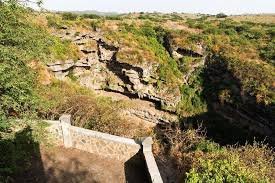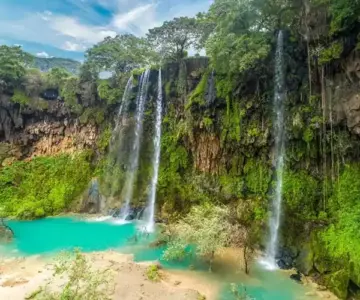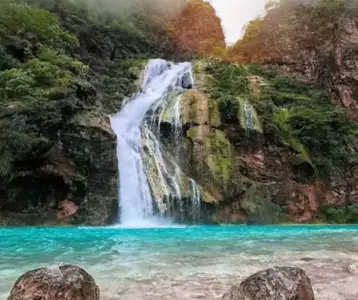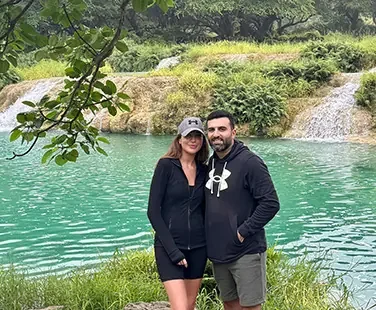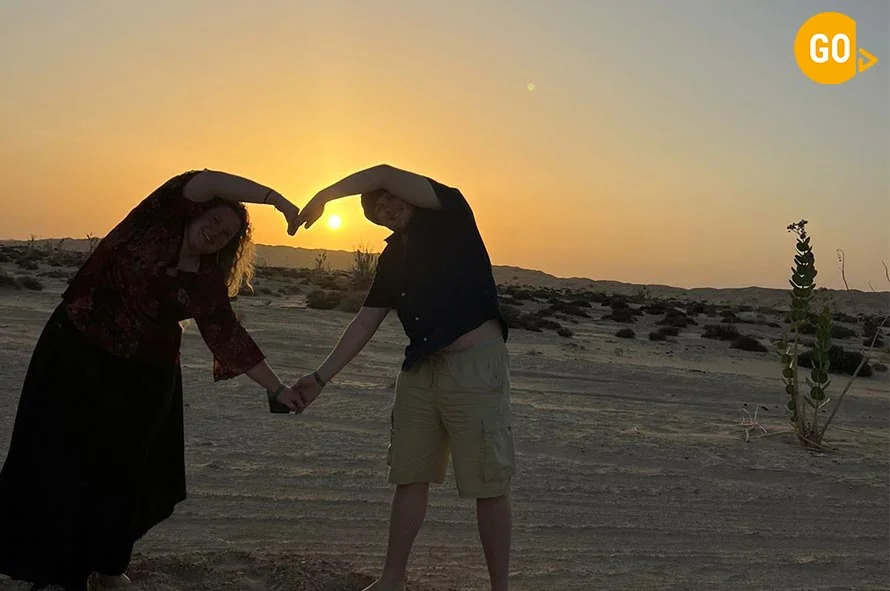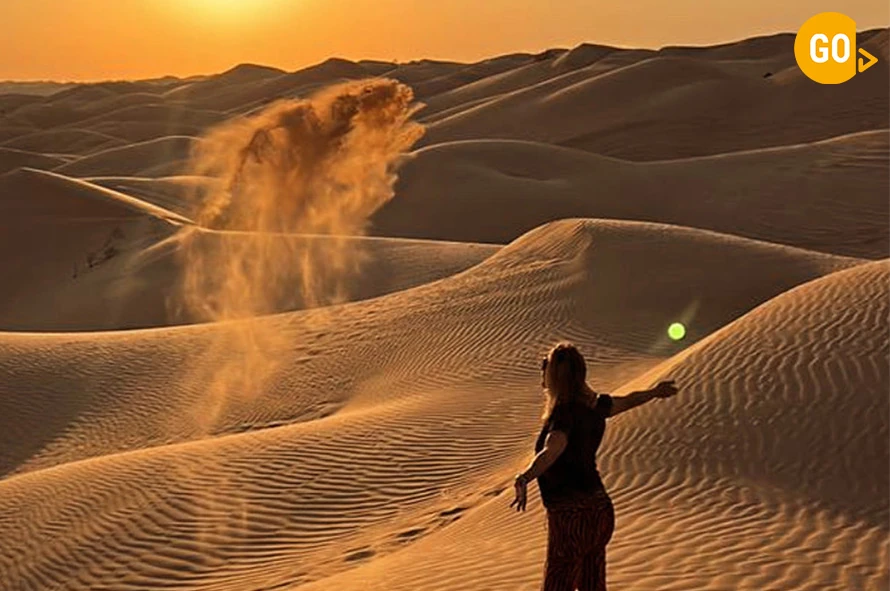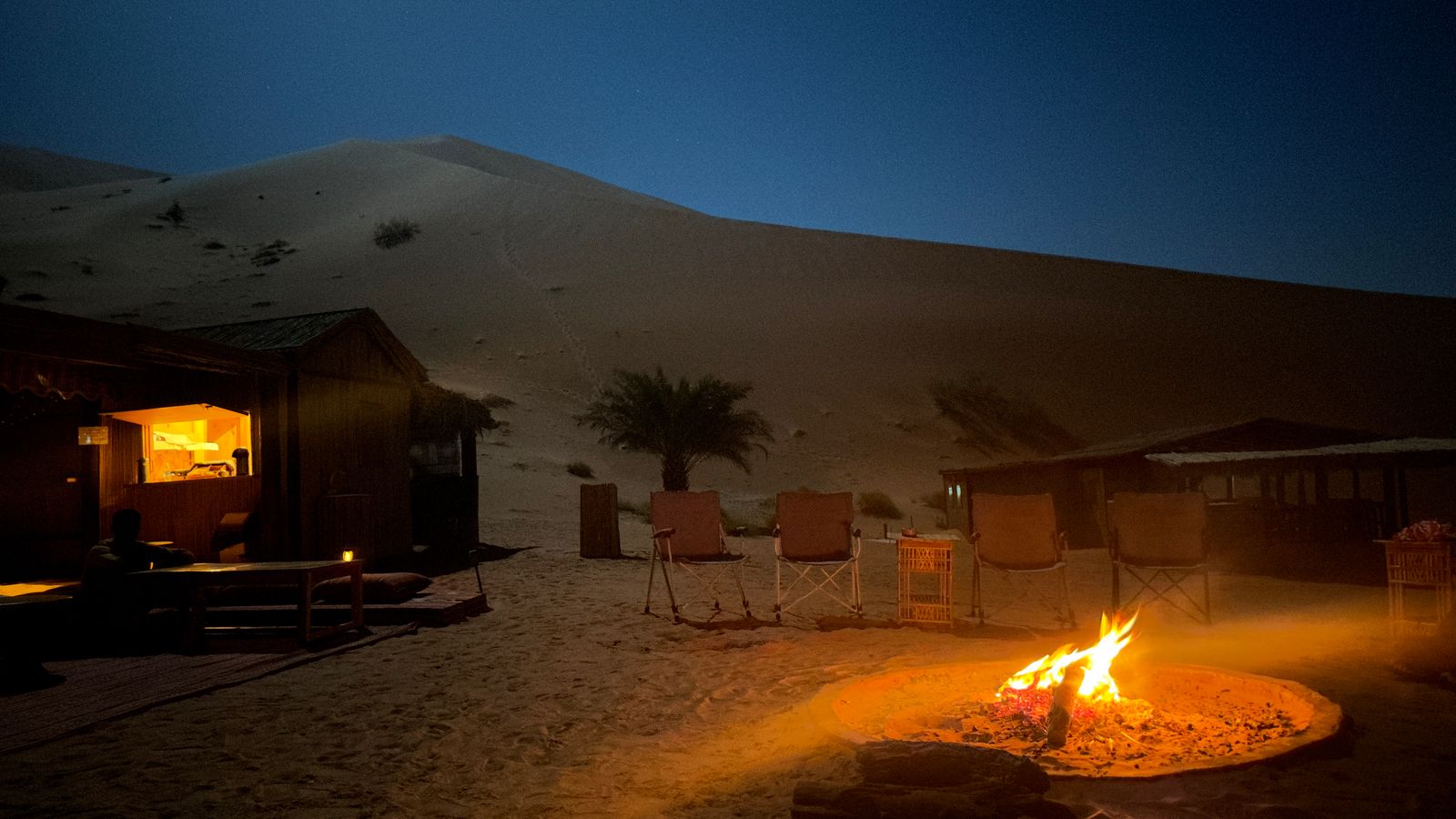Nestled in the heart of Salalah, Oman, lies a natural wonder that captivates visitors with its sheer size and mysterious allure. The Tawi Atair Sinkhole, also known as the “Well of Birds,” is a geological marvel that has become a must-see attraction for tourists and nature enthusiasts alike. This impressive sinkhole offers a unique glimpse into the region’s fascinating geological history and serves as a haven for diverse wildlife.

The Tawi Atair Sinkhole is located approximately 100 kilometers east of Salalah, in the Dhofar region of Oman. Its remote location adds to its mystique, making the journey to reach it an adventure in itself. As visitors approach the site, they are greeted by the stark beauty of the surrounding landscape, characterized by rugged terrain and sparse vegetation.
The sinkhole’s name, “Tawi Atair,” translates to “Well of Birds” in Arabic, a fitting moniker given the abundance of avian life that calls this natural formation home. The sinkhole is a massive depression in the earth’s surface, formed over millions of years through the gradual dissolution of limestone bedrock. Its impressive dimensions are a testament to the power of nature’s slow but relentless forces.
Measuring approximately 211 meters in diameter and plunging to a depth of around 211 meters, the Tawi Atair Sinkhole is a sight to behold. Its sheer size is awe-inspiring, leaving visitors in wonder at the forces of nature that shaped this remarkable feature. The walls of the sinkhole are nearly vertical, creating a dramatic and imposing presence that commands attention and respect.
One of the most striking features of the Tawi Atair Sinkhole is the lush vegetation that clings to its walls and thrives at its base. This verdant oasis stands in stark contrast to the arid surroundings, creating a mesmerizing visual spectacle. The presence of plant life is made possible by the unique microclimate within the sinkhole, which traps moisture and provides a sheltered environment for various species to flourish.
The sinkhole serves as a vital water source for the local ecosystem, with a small stream flowing through its base. This water supply has an influence on the diverse array of plant and animal life that calls the sinkhole home. Visitors can observe a variety of bird species swooping and soaring within the sinkhole’s confines, their calls echoing off the rocky walls and creating a symphony of natural sounds.
For birdwatchers and wildlife enthusiasts, the Tawi Atair Sinkhole is a paradise. The sheltered environment provides an ideal habitat for numerous bird species, including swifts, pigeons, and various raptors. Lucky visitors might even catch a glimpse of the rare and elusive Egyptian vulture, which has been known to nest within the sinkhole’s crevices.
The geological significance of the Tawi Atair Sinkhole extends beyond its impressive size and diverse ecosystem. It offers valuable insights into the region’s geological history and the processes that have shaped the landscape over millions of years. Geologists and researchers are drawn to the site to study its formation and the ongoing geological processes at work.
The sinkhole’s creation is attributed to the karst topography prevalent in the region. Karst landscapes are characterized by the dissolution of soluble rocks, such as limestone, by groundwater. Over time, this process leads to the formation of underground caverns and, in some cases, sinkholes when the surface layer collapses into the void below.
Visitors to the Tawi Atair Sinkhole can explore the site from various vantage points. A viewing platform has been constructed at the rim of the sinkhole, offering breathtaking panoramic views of the entire formation. From this elevated position, one can truly appreciate the scale and grandeur of the sinkhole, as well as observe the diverse plant and animal life that thrives within its depths.
For the more adventurous, there are opportunities to descend into the sinkhole itself. However, it is important to note that such expeditions should only be undertaken with proper guidance and equipment. The steep walls and potentially unstable terrain require caution and expertise to navigate safely.
The journey to reach the Tawi Atair Sinkhole is an adventure in itself. The remote location means that visitors must traverse rugged terrain and unpaved roads to reach the site. Many choose to join organized tours or hire local guides who are familiar with the area and can provide valuable insights into the sinkhole’s history and significance.
The best time to visit the Tawi Atair Sinkhole is during the cooler months, typically from October to April. During this period, the weather is more pleasant for outdoor exploration, and the landscape may be more lush following the monsoon season. However, the sinkhole’s unique microclimate means that it maintains a relatively stable environment year-round, making it a worthwhile destination regardless of the season.

As with any natural wonder, responsible tourism is crucial to preserving the Tawi Atair Sinkhole for future generations. Visitors are encouraged to adhere to guidelines set by local authorities and tour operators to minimize their impact on the fragile ecosystem. This includes staying on designated paths, refraining from littering, and respecting the wildlife that calls the sinkhole home.
The Tawi Atair Sinkhole has an impact on the local community, serving as a source of pride and a driver of tourism in the region. Many residents have found employment opportunities as guides or in supporting roles within the tourism industry. This economic benefit has helped to raise awareness about the importance of preserving natural wonders like the sinkhole and has fostered a sense of stewardship among the local population.
In recent years, efforts have been made to enhance the visitor experience at the Tawi Atair Sinkhole while balancing the need for conservation. Interpretive signage has been installed to educate visitors about the sinkhole’s geology, ecology, and cultural significance. These educational initiatives aim to foster a deeper appreciation for the site and encourage responsible tourism practices.
The Tawi Atair Sinkhole also holds cultural significance for the local Omani people. Legends and folklore have grown around the formation, with some stories attributing its creation to supernatural forces or ancient civilizations. These tales add an extra layer of intrigue to the site, blending scientific understanding with local traditions and beliefs.
For photographers, the Tawi Atair Sinkhole offers endless opportunities to capture stunning images. The interplay of light and shadow within the sinkhole creates dramatic scenes throughout the day. The golden hours of sunrise and sunset are particularly magical, as the changing light illuminates the rocky walls and vegetation in warm, ethereal hues.
Beyond its natural beauty, the Tawi Atair Sinkhole serves as an important research site for scientists studying karst formations and cave ecosystems. Ongoing studies aim to better understand the geological processes that created the sinkhole and continue to shape it. This research has implications not only for understanding the local landscape but also for broader applications in fields such as hydrology and climate science.
The sinkhole’s unique environment also provides valuable data for climate researchers. The sheltered nature of the formation creates a microclimate that can offer insights into how plant and animal species adapt to changing conditions. This information is particularly relevant in the context of global climate change and its potential impacts on fragile ecosystems.
As awareness of the Tawi Atair Sinkhole grows, so too does the need for sustainable management practices. Local authorities and conservation organizations are working together to develop strategies to protect the site while still allowing for responsible tourism. These efforts include monitoring visitor numbers, implementing erosion control measures, and conducting regular ecological assessments.
Education plays a crucial role in the preservation of natural wonders like the Tawi Atair Sinkhole. Many schools in the region organize field trips to the site, allowing students to learn about geology, ecology, and conservation firsthand. These educational initiatives help to foster a new generation of environmental stewards who understand the value of protecting unique natural formations.
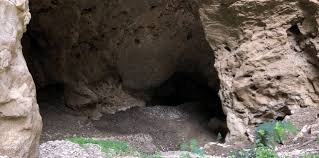
The Tawi Atair Sinkhole is not just an isolated attraction; it is part of a broader network of natural and cultural sites in the Dhofar region. Visitors to the area often combine their trip to the sinkhole with explorations of other nearby attractions, such as the Wadi Darbat valley or the historic city of Salalah. This integrated approach to tourism helps to spread the economic benefits across the region and provides visitors with a more comprehensive understanding of Oman’s diverse landscapes and cultural heritage.
As interest in eco-tourism continues to grow globally, the Tawi Atair Sinkhole is poised to become an even more significant attraction in Oman’s tourism landscape. Its unique combination of geological wonder, biodiversity, and cultural significance makes it a compelling destination for travelers seeking authentic and meaningful experiences.
In conclusion, the Tawi Atair Sinkhole stands as a testament to the raw beauty and power of nature. Its imposing presence, rich ecosystem, and geological significance make it a truly must-see attraction for anyone visiting Salalah and the Dhofar region of Oman. As visitors stand at the edge of this massive depression, gazing into its depths, they cannot help but feel a sense of awe and wonder at the forces that have shaped our planet over millions of years. The Tawi Atair Sinkhole is more than just a natural formation; it is a window into the Earth’s history, a haven for diverse life, and a source of inspiration for all who have the privilege of experiencing its majesty firsthand.

